By all accounts, she shouldn’t have been there. She had suffered damage beyond any expectations her designers had. But she was an American warship, a fulfillment of Alfred T. Mahan’s ideas of power projected around the world. Her salvage and repair were a feat of engineering and determination. A phoenix rises from the ashes, but USS West Virginia (BB-48) rose from the waters of Pearl Harbor to contribute to the defeat of the Japanese empire.
Pearl Harbor was shallow, and on December 7, 1941, West Virginia was moored outboard of USS Tennessee (BB-43) at Ford Island in 40 feet of water. As the Japanese attack began, West Virginia, her port side laid bare, became an easy target for enemy torpedoes. The first two struck simultaneously, at 7:55 a.m, as General Quarters sounded. Men poured from hatchways as she began to list. A third explosion rocked the battlewagon. Spotter planes atop main turrets were aflame when a massive explosion on USS Arizona (BB-39) sent chunks of steel flying into the air. Moored nearby, pieces as large as five inches rained down on West Virginia. Gun crews fired on approaching enemy aircraft, adding to the cacophony of the first day of a new war.
Torpedoes ripped into her hull below the waterline and bombs fell from enemy aircraft, one causing the sections of the superstructure to collapse. As fires broke out, the ship’s damage control parties fruitlessly attempted to extinguish them. All hands not severely wounded were at work, fighting fires, manning guns, or assisting with damage control. Up on the bridge, the ship’s commanding officer, Captain Mervyn S. Bennion, had been mortally wounded in the abdomen by an explosion. Mess Attendant second class Doris Miller helped pull sailors through oil and water, up to higher decks not awash as West Virginia began to settle on the bottom. Miller assisted with moving the wounded Bennion, and even though he’d had no instruction in the weapon’s use, manned a machine gun, firing at incoming Japanese planes.
Eventually the order to abandon ship was given. As the wounded were loaded into whaleboats and other small craft, others either crossed over to Tennessee, or dove into the oil-covered water, swimming to Ford Island. When the crew was finally accounted for, there were two officers, including her commanding officer Bennion, and 106 enlisted men killed. Numerous others were wounded, and some would need months to recover from the attack. West Virginia, known by her crews as “Wee Vee” would need much longer.
-

On the left is Tennessee, next to her is the sunken West Virginia at Pearl Harbor, the extent of the flooding and damage evident. Courtesy of the Naval History and Heritage Command.
-

Damage to West Virginia has been marked on this drawing of the ship, taken from the Material Damage report from February 1942. Note this is the starboard side, not the port side where the actual damage occurred. This was the only drawing available at the time the report was made. Two additional torpedo hits were later confirmed, including the one which knocked her rudder off. Courtesy of the Naval History and Heritage Command.
The damage inflicted in a matter of minutes took over two years to repair. To say the Japanese attack on Pearl Harbor on December 7, 1941, left West Virginia crippled is understating the true extent of the damage. In an official report of ships damage at Pearl Harbor, West Virginia hardly sounds worth repairing:
“West Virginia sank at her berth as a result of four or five aircraft torpedo hits and at least two bomb hits. The vessel rests on a hard bottom with all spaces flooded up to two or three feet below the main deck. Most of the damage from torpedoes is in the midship area, which is badly wrecked both below water and above water. A large bomb passed through the foretop and the boat deck and apparently exploded near the port side on the main or second deck. This explosion caused considerable wreckage and a terrific powder and oil fire, which burned out the whole area and extended to the foremast structure up to and including the bridge. A second bomb hit the top of turret III and passed through the 6-inch top. The nature of the penetration indicated defective material. This bomb did not explode but caused damage to the slide of the left gun. Recently another torpedo hole, and parts of the torpedo, have been located aft under the counter. The steering engine room appears to be wrecked and the rudder is lying on the bottom.”
Her salvation was due to the actions of one man, which resulted in West Virginia remaining upright at her moorings, unlike USS Oklahoma (BB-37), which capsized. Lieutenant Commander John S. Harper, the damage control officer aboard West Virginia, quickly initiated counterflooding, keeping the battlewagon upright. As a result, West Virginia was found to be drawing 50 feet 6 inches forward, and 40 feet 10 inches aft, compared to her usual draft of approximately 30 feet. The midship area was considerably damaged, and the oil fire, which had burned for 30 hours, caused extensive damage to the upper works. The hull crinkled as the ship settled on the bottom, and one torpedo had knocked the rudder off. Despite the damage, the decision was made to salvage the ravaged ship, modernize her, and return her to service.
Salvage was undertaken in several stages. Patches had to be placed on holes in the hull by divers. These patches were made as cofferdams, which were large wooden structures braced with steel and attached to the ship by divers. Special concrete that would harden in water was then poured into sections around the cofferdams, sealing the bottoms and making them watertight. With the major holes patched, 800,000 gallons of fuel oil, all projectiles and other supplies were removed from the ship to reduce weight. As water was pumped out of the ship, salvage crews began to work through compartments, removing the remains of 66 trapped sailors. Marks on a bulkhead in one compartment indicated three sailors survived there for 16 days. With access to food and water, they held on until the breathable air ran out.
The work was done in earnest, performed by naval and civilian personnel and a skeleton crew of sailors and marines which remained attached to West Virginia. Specialists from various companies arrived in Pearl Harbor to break down and repair equipment such as electrical panels and the steam-driven turbine engines which powered West Virginia. Seventy tons of fresh meat had been aboard Wee Vee when she sank, all of which the crew removed via 10 gallon cans. Crews took care to wear rescue breathing apparatus or monitor the air quality as they cleaned compartments. Those containing large stores of paper were some of the most hazardous to empty, as the decaying paper gave off noxious gasses.
On May 17, 1942, West Virginia was once again floated. The first step in her recovery was done, and she was moved to Drydock #1 at Pearl on June 9. Her draft had improved to 33 feet, just barely allowing her to enter the drydock. There, repairs were made to the hull to make it watertight once again. Machinery and other equipment were removed and either repaired at Pearl or marked for later installation stateside. The oil residue left behind had to be removed from surfaces. At the time of the attack, West Virginia still had her original cage masts, both of which were removed in Pearl. Some guns were repaired so the ship could defend itself on the trip home. Crew spaces were cleaned up and returned to a usable state, and while the enlisted galley had burned, the officer’s galley was repaired and put to use for the entire crew. The ship was safely floated again after just three months, but work on the ship continued pier side until April 1943. On April 30, after more than a year of work on temporary repairs, West Virginia was stabilized, repaired, and ready to make the journey to Bremerton, Washington, for final repairs and outfitting.
-

Six months after she sank at her moorings, West Virginia moves to Drydock #1 at Pearl Harbor for temporary repairs to enable the ship to return to the United States. Note the water being pumped out, and the cofferdams attached as temporary patches to allow her to flow. Courtesy of the Naval History and Heritage Command.
-

In Drydock #1, the hull and upper decks on the port side have been cut away as West Virginia undergoes repairs. Courtesy of the Naval History and Heritage Command.
-

Teams work to demolish the cofferdams installed against the ship’s hull. Alongside the bottom of the ship, the concrete poured into the cofferdams is visible. The ship’s armor belt is distorted from the damage inflicted by enemy torpedoes. Courtesy of the Naval History and Heritage Command.
-

The dirty, difficult work to clean and repair the ship was performed by all ranks. On the left is Salvage Officer Captain Homer N. Wallin with the West Virginia’s new commanding officer, Lieutenant Commander William White. Both men wear the tank suit coveralls and knee-length rubber boots worn by all men when engaged in particularly dirty salvage work. Courtesy of the Naval History and Heritage Command.
-

West Virginia underway under her own power on April 30, 1943, for the Puget Sound Navy Yard, Bremerton, Washington, for final repairs and outfitting. Courtesy of the Naval History and Heritage Command.
In early July 1944, over two and a half years after the attack at Pearl Harbor, West Virginia began her sea trials from Puget Sound Navy Yard, Bremerton, Washington. She had been at the yard in Washington for over a year undergoing permanent repairs and modernization. The ship that took to the seas in July 1944 looked nothing like the old battlewagon that had been a target of the Japanese attack. Equipped with updated radar and fire-control equipment, she was ready to unleash the power of her 16-inch main battery on the enemy who had sidelined her years before.
-

West Virginia around 1934 in San Francisco Bay. The last of the dreadnaughts, she was commissioned in 1923, the last battleship completed before the limitations imposed by the Washington Naval Treaty. She had not yet been modernized in 1941, so she appeared at Pearl Harbor as seen here, with the cage masts common of pre-treaty battleships. Courtesy of the Naval History and Heritage Command.
-

After undergoing repairs and modernization, the 22 year old battleship was outfitted with some of the most modern technology and was barely recognizable as the same ship from Pearl Harbor. Courtesy of the Naval History and Heritage Command.
Her first opportunity to exact her toll on Japanese forces came on October 19, 1944, as Wee Vee bombarded targets in Leyte, Philippines, flying the same flag which had been hoisted on that fateful Sunday in December. The next day, she covered landing forces there, providing fire as needed. What might be her crowning achievement came on October 25, when she participated in the battle of Surigao Strait. In what was to be the last engagement of battleships in history, West Virginia opened fire on an enemy ship, firing 16 salvos from her main battery. When the smoke cleared, the target was discovered to be the Japanese battleship Yamashiro, which sank in minutes. Though West Virginia’s captain let the crew claim credit, the damage had been inflicted by five battleships, plus cruisers, firing on the Japanese ship and making it a group effort which sank her.
After her triumphant engagement at Surigao, West Virginia continued her tear across the Pacific, supporting the landings at Mindoro, Luzon, Iwo Jima, and finally, Okinawa. After spending years in dry docks and shipyards, West Virginia put in 223 days in battle, where she shot down eight would-be Kamikazes and assisted with 12 others. Her number came up on April 1, 1945, when one successful Japanese pilot plowed his aircraft into Wee Vee, killing four sailors and wounding 23. But after Pearl, one enemy aircraft was akin to a mosquito bite, and she stayed in the action.
On August 31, 1945, West Virginia steamed into Tokyo Bay. A Japanese harbor pilot had come aboard to navigate the battlewagon to her berth. Five members of the ship’s crew, all musicians, were transferred to USS Missouri (BB-63) to augment the band which would play at the official surrender ceremony.
As the Japanese delegation boarded Missouri on September 2, West Virginia lay in harbor some distance away. She was the only survivor of the Pearl Harbor attack present in Tokyo Bay that morning. (The cruiser USS Detroit (CL-8), had also been present at Pearl, but received no damage.) As the most important ceremony of the war got underway, West Virginia had no role in the somber occasion. She lay silently, ghastly in the distance, a triumphant reminder of how Japan had gambled and lost.
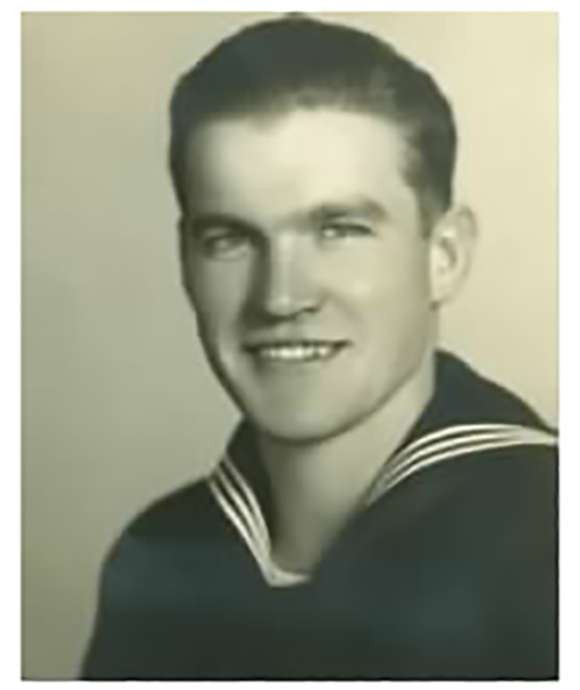
James Downing: Oral History
Downing entered the Navy in September 1932 and became a gunner's mate aboard USS West Virginia. He assisted the injured crew during the Pearl Harbor attack, and later wrote notes to each family member explaining what had happened to their relatives and their current condition.
This article is part of an ongoing series commemorating the 75th anniversary of the end of World War II made possible by Bank of America.
Kali Martin
Kali Martin is a former Research Historian of The National WWII Museum's Jenny Craig Institute for the Study of War and Democracy.
Cite this article:
MLA Citation:
APA Citation:
Chicago Style Citation:
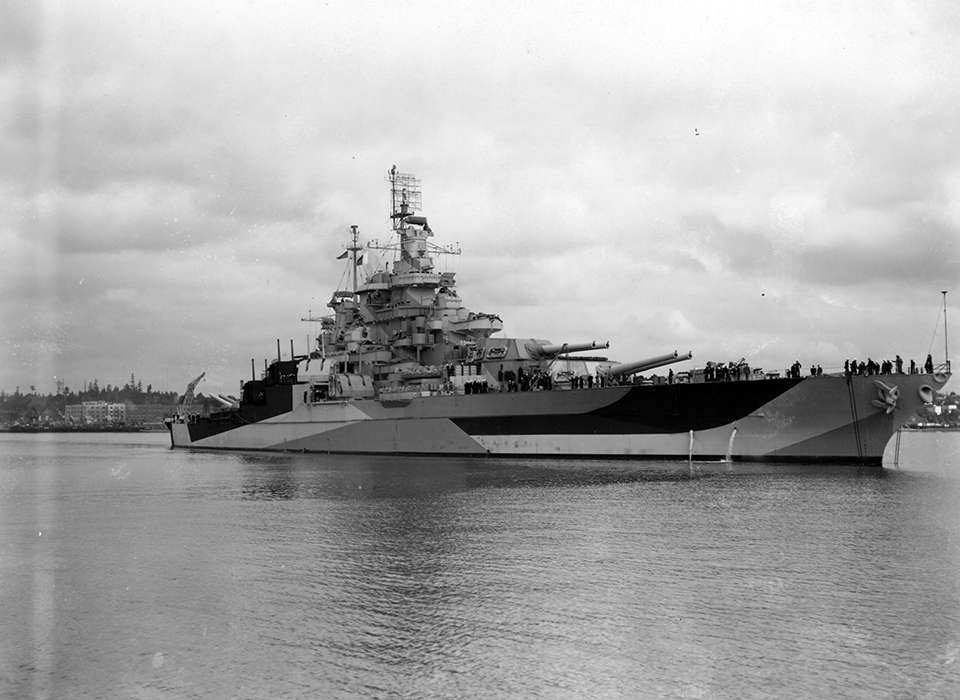
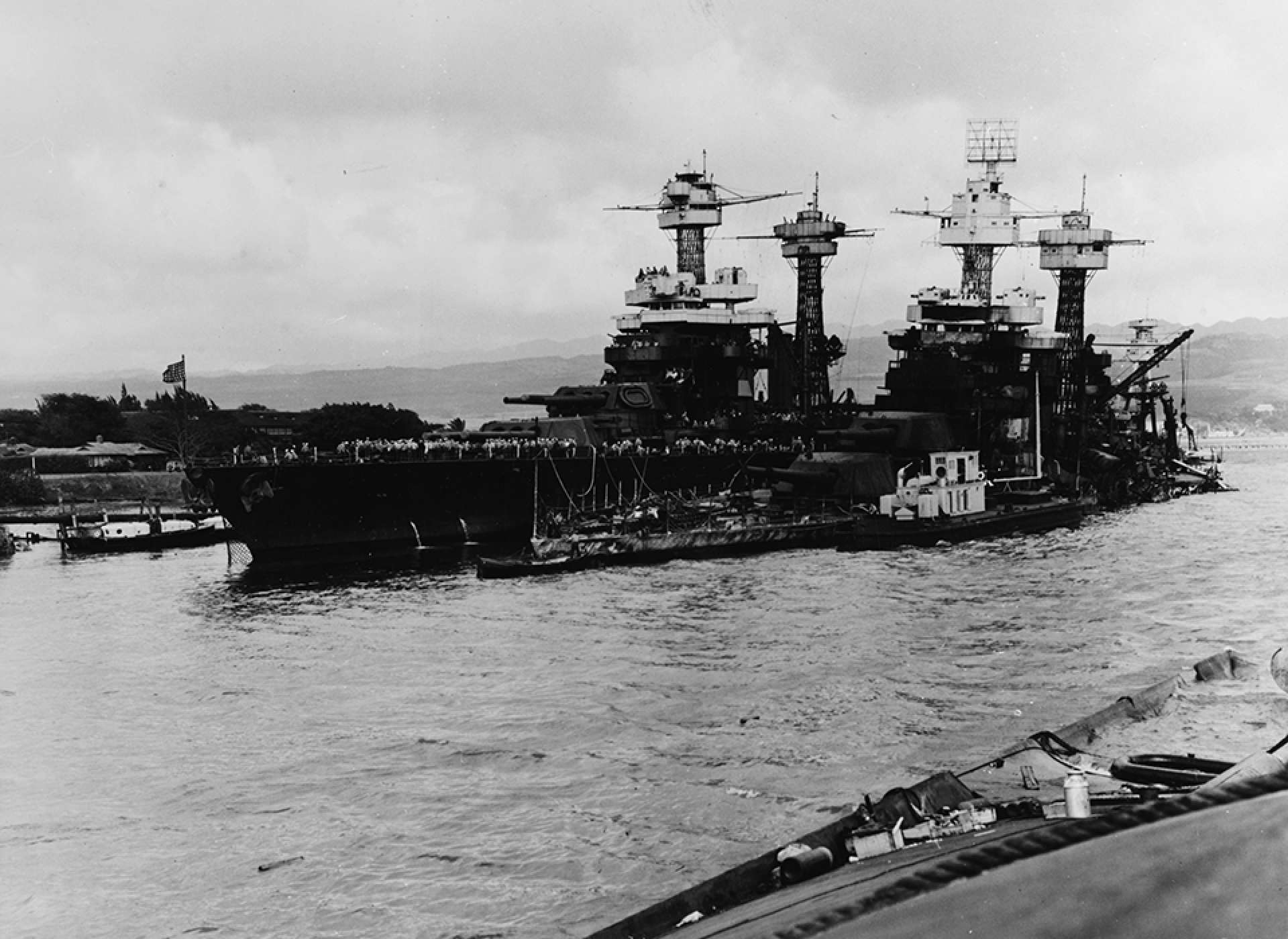
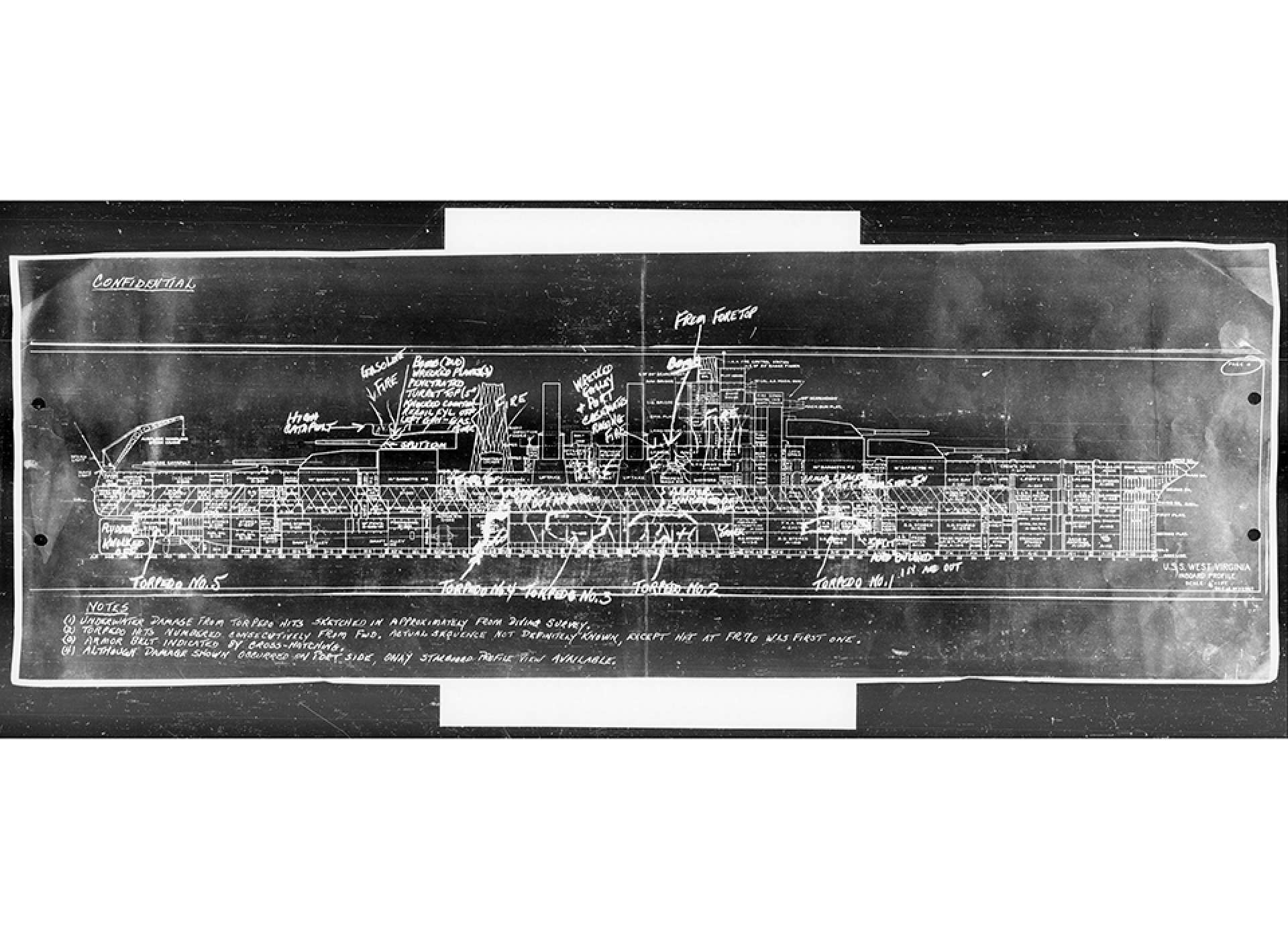
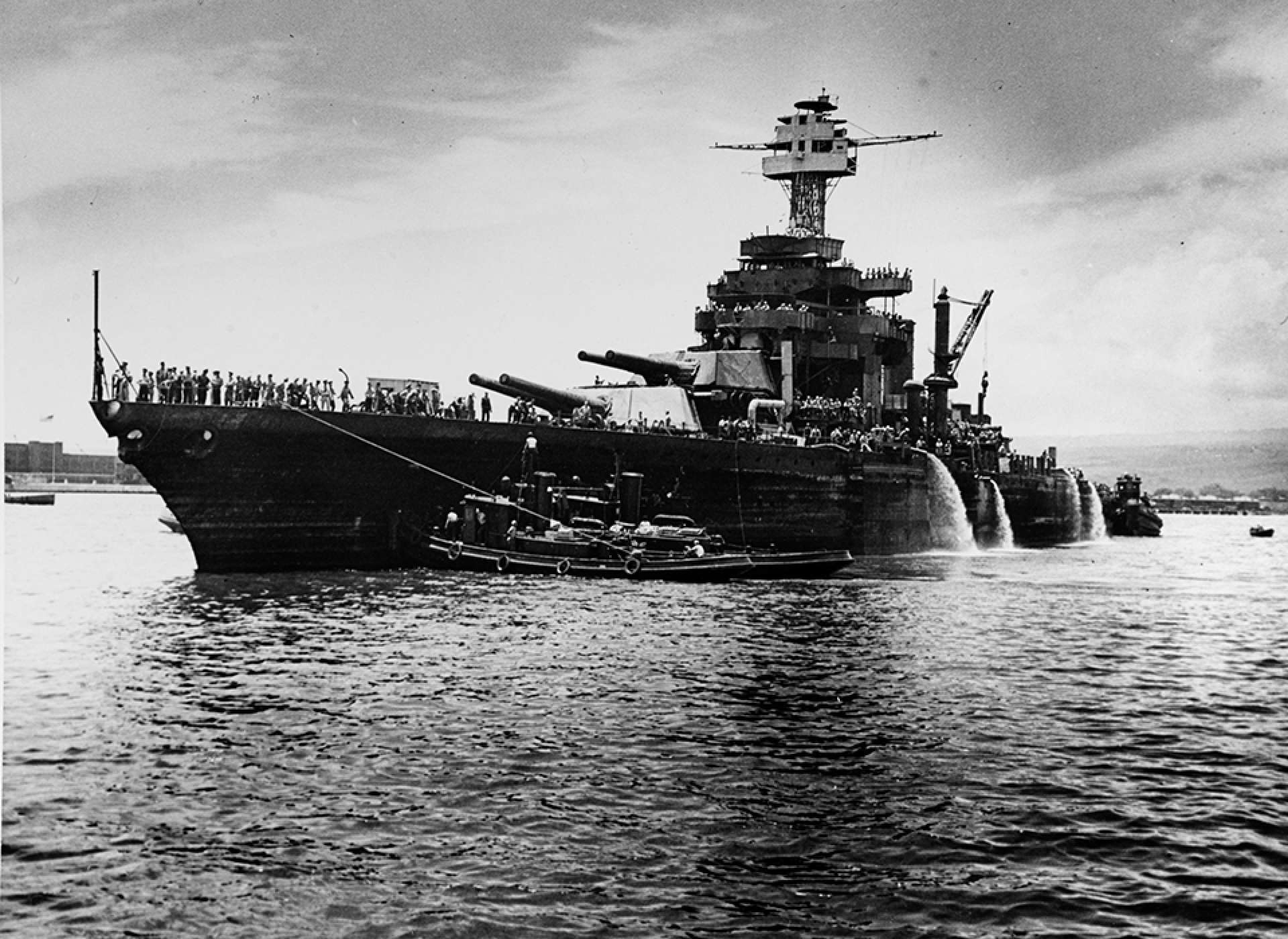
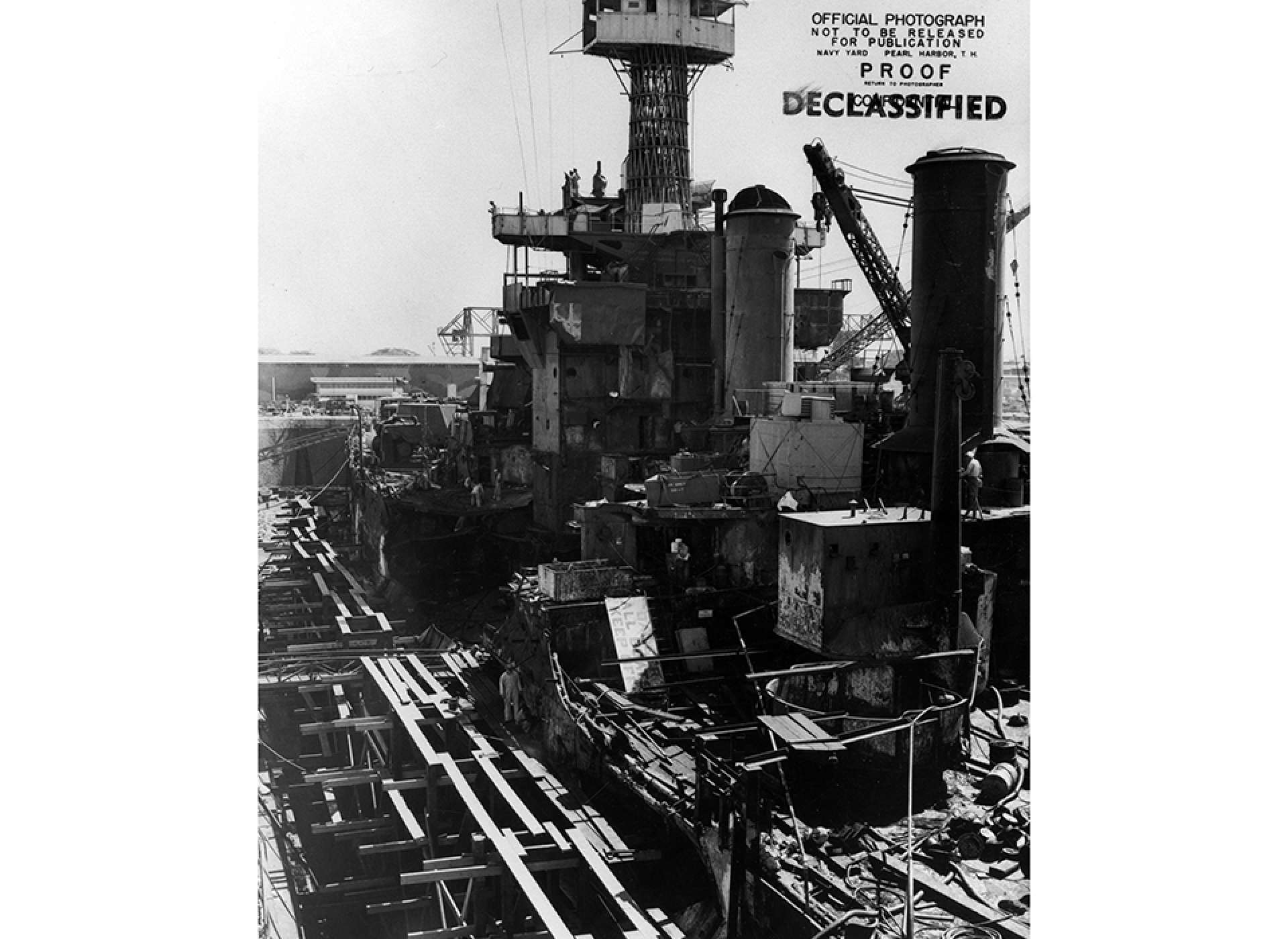
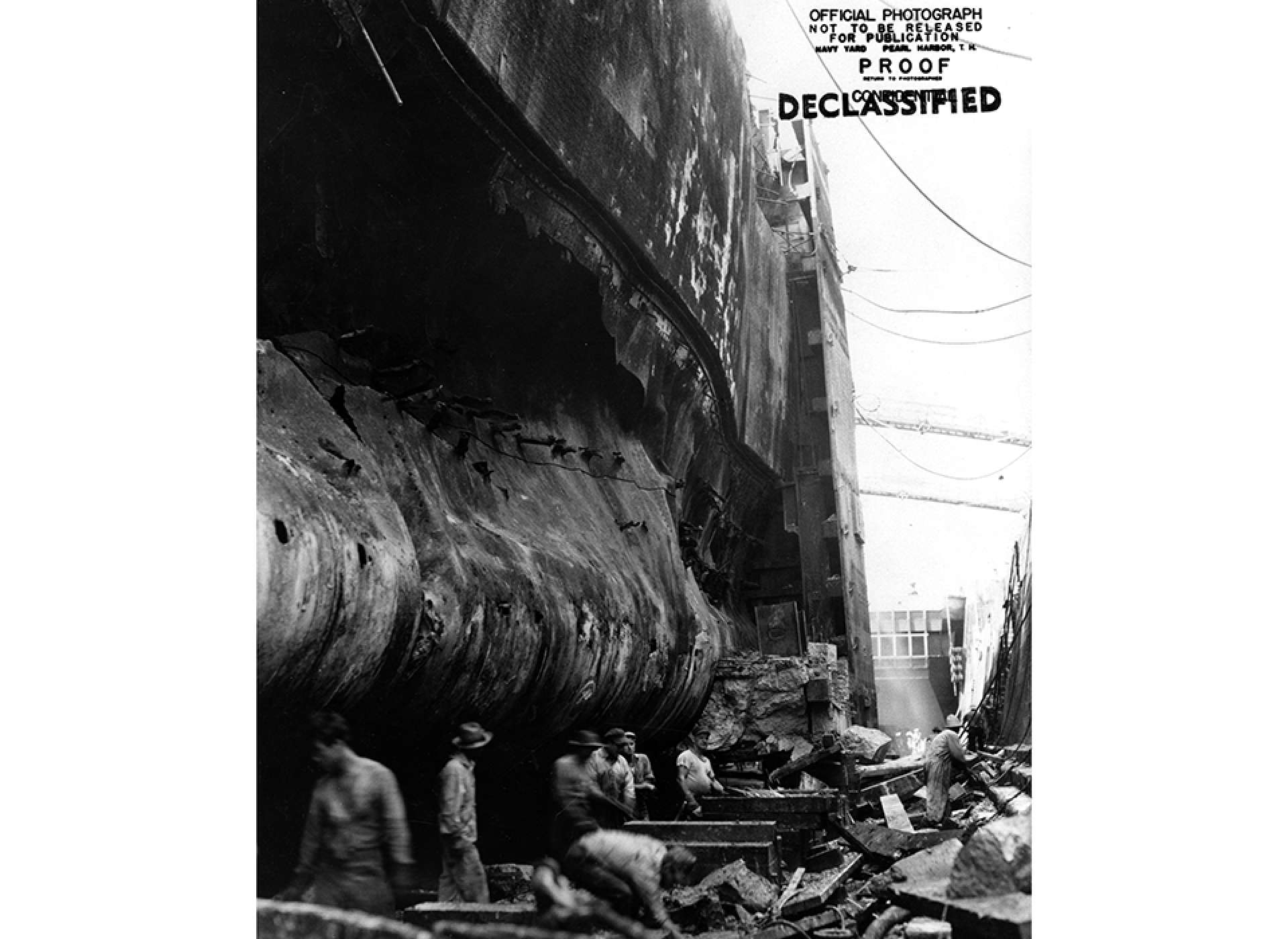
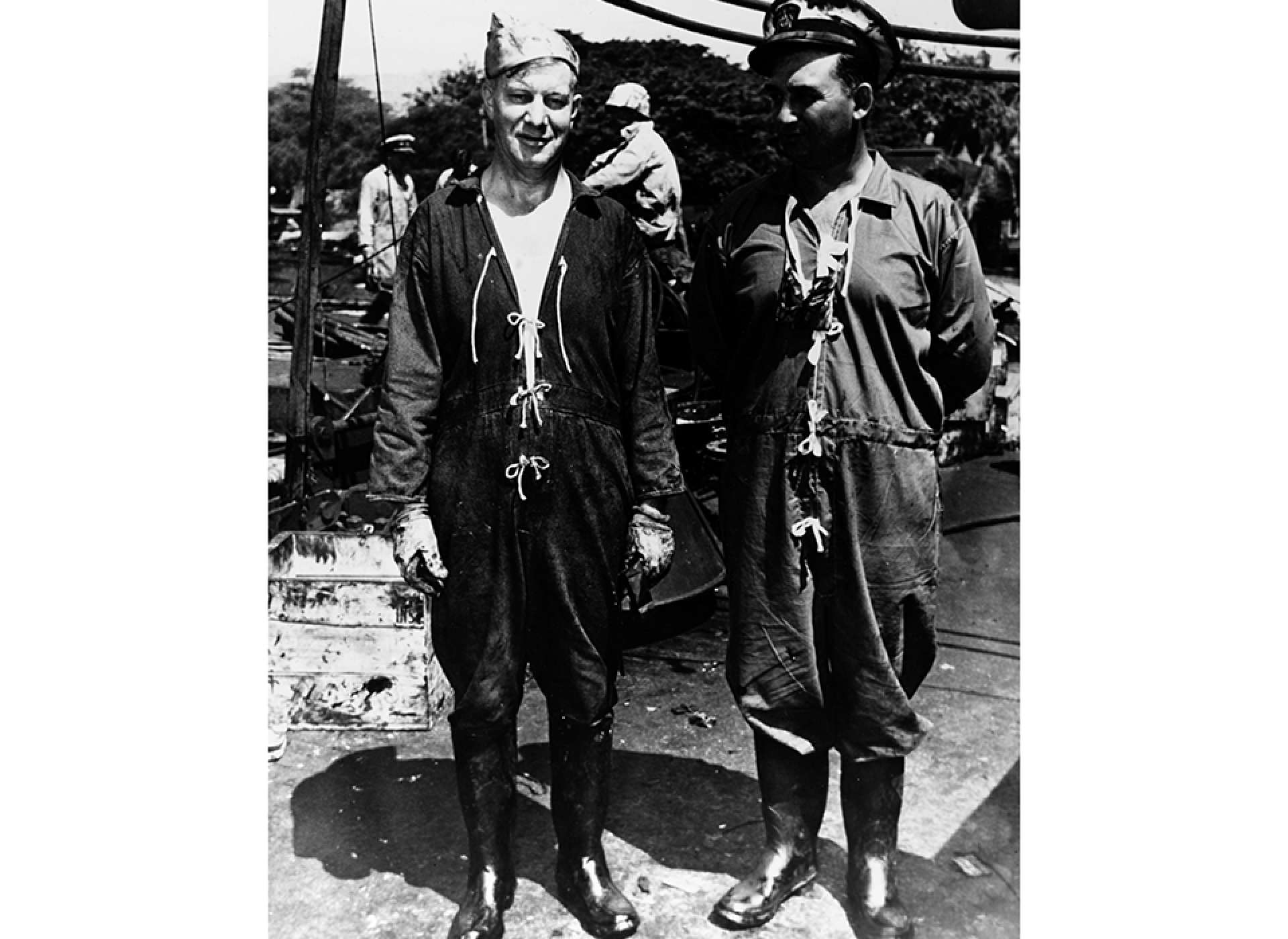
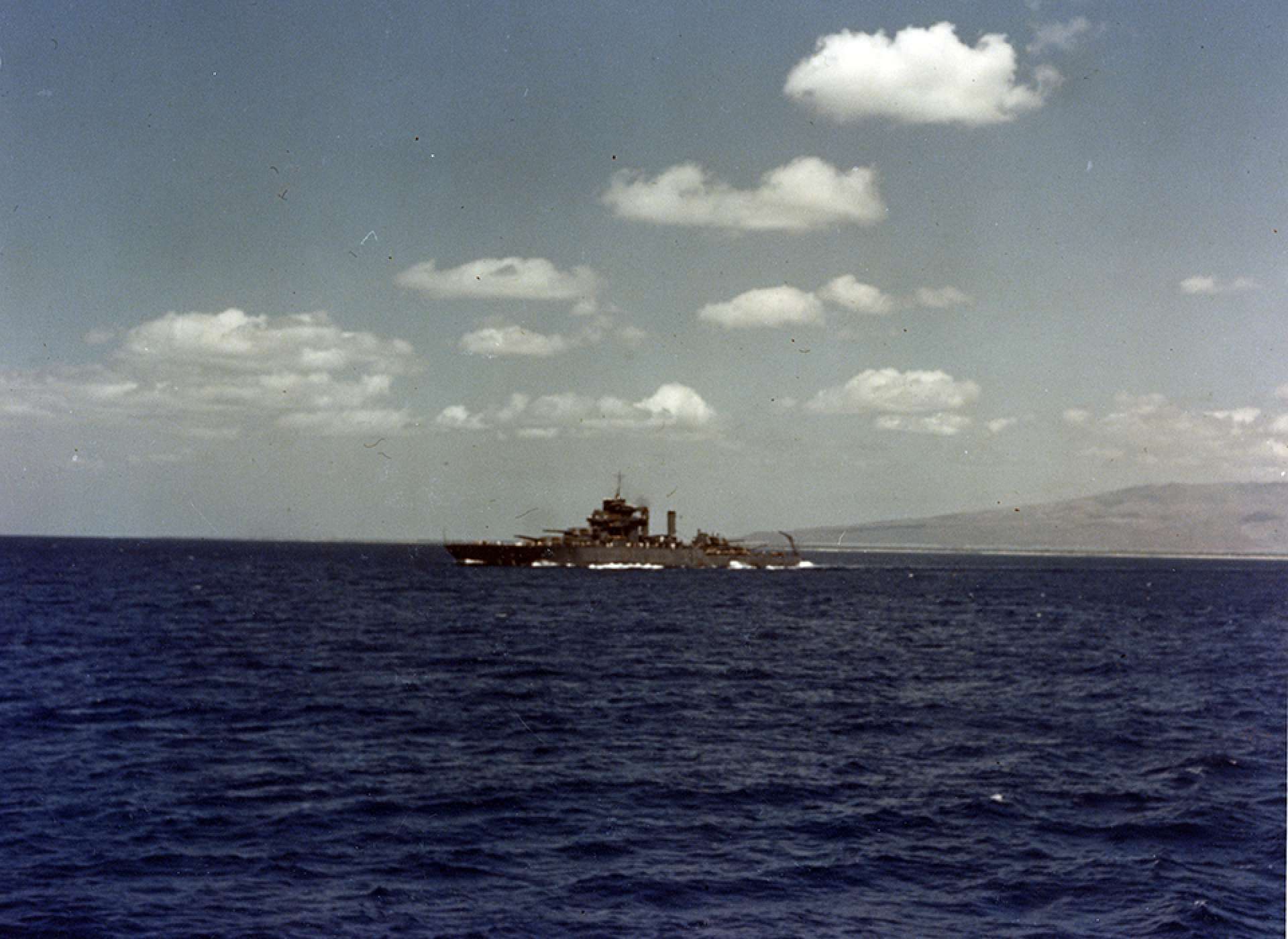
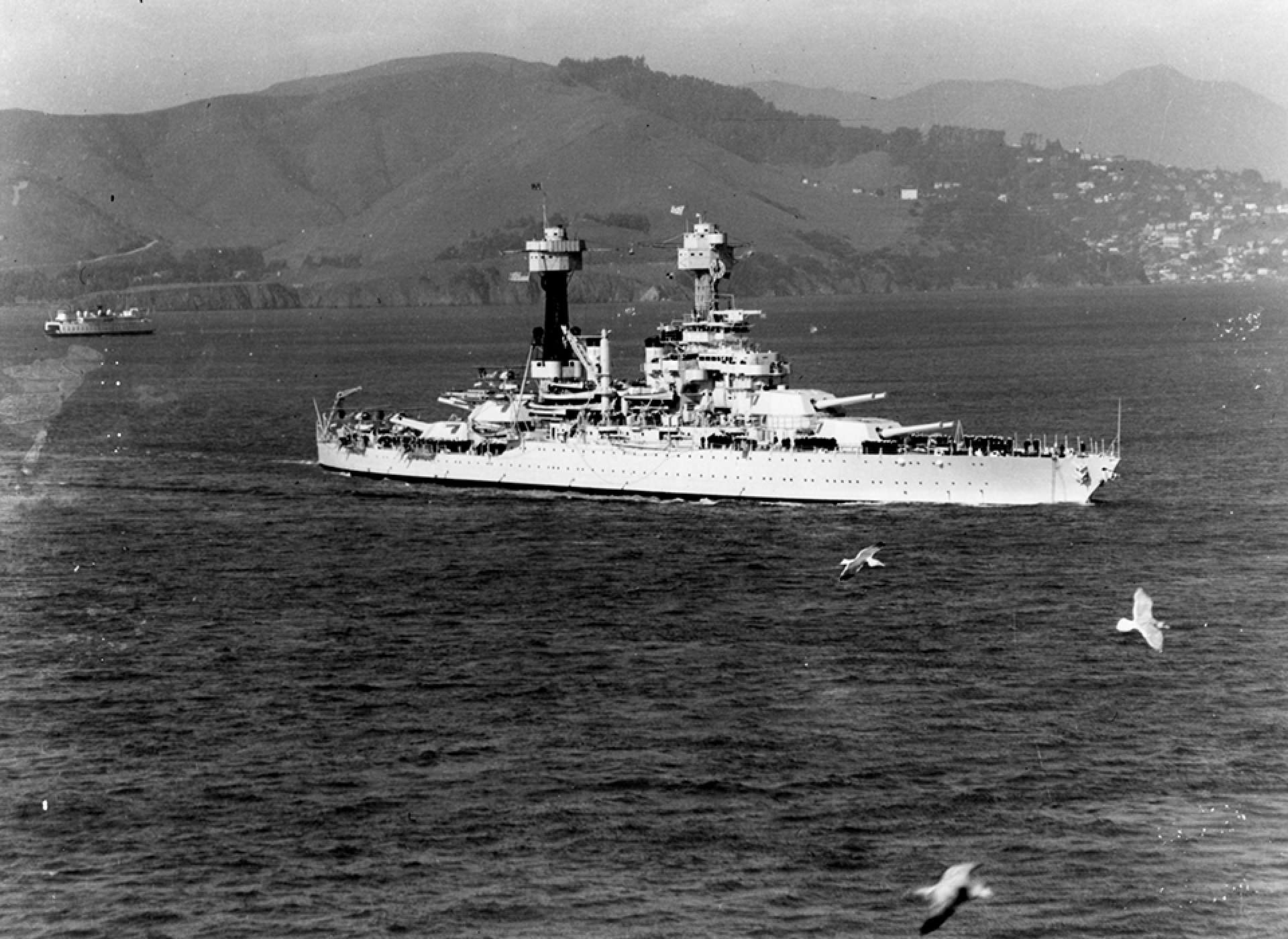
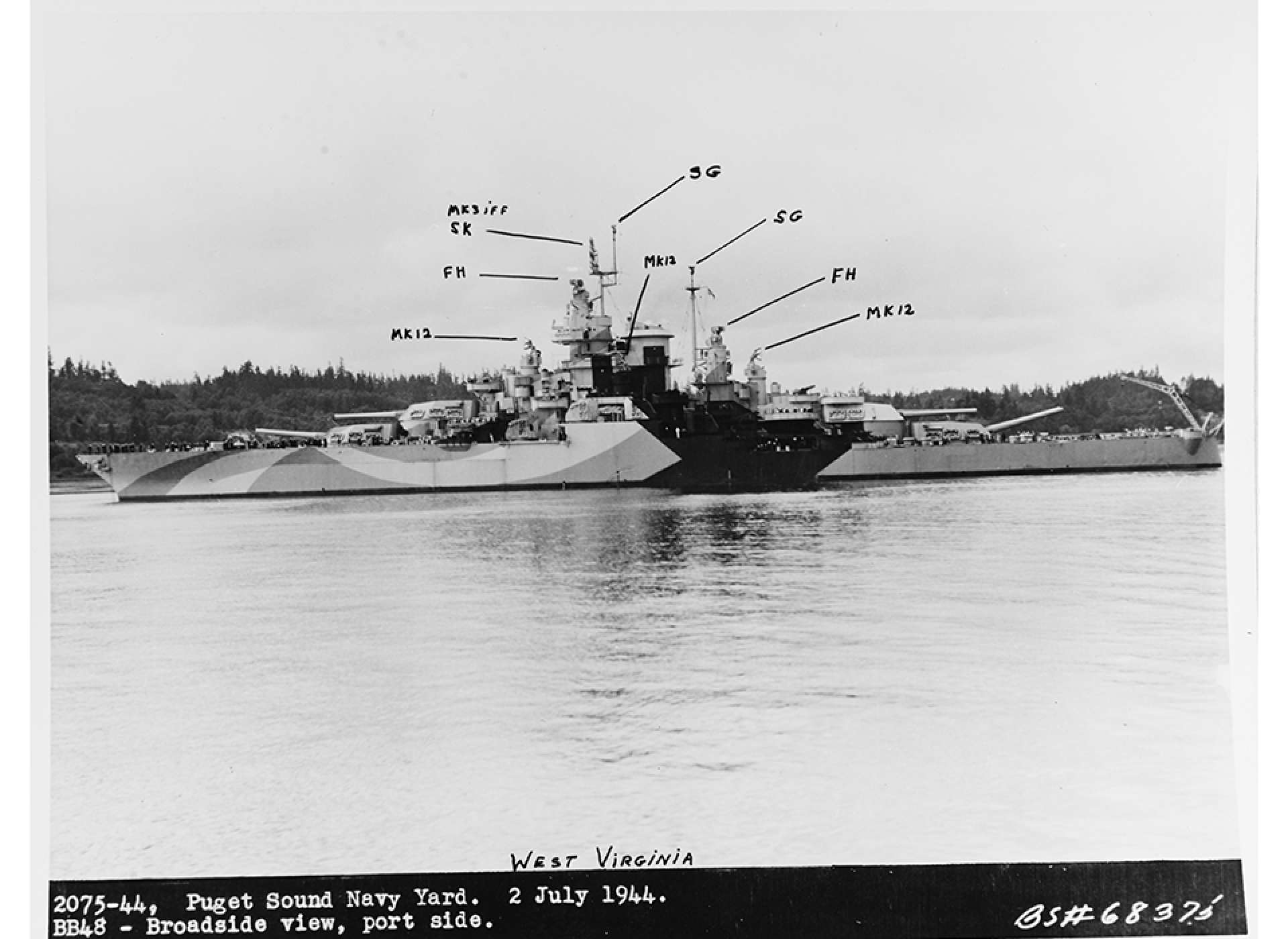







![Max Fuchs, New York City cantor, sings as Rabbi Sydney [sic] Lefkowitz, Richmond, VA, conducts the first Jewish services from Germany.](/sites/default/files/styles/max_650x650/public/2025-10/image1.jpg)

